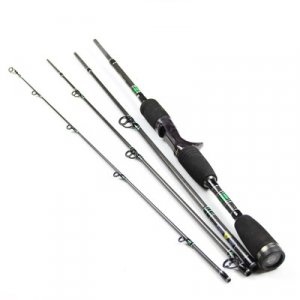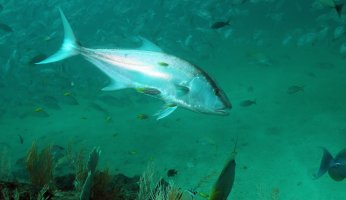Snagging Spoonbills
 Snagging Spoonbills
gearweare.net
Snagging Spoonbills
gearweare.net
Spoonbills, also known as paddlefish, offer an exciting fishing experience. They can weigh over 100 pounds and provide one of the strongest fights of any freshwater fish. These fish are bottom feeders and stay in deep pools except when spawning. They have no bones, small eyes, no scales, and a long hard paddle protruding from the nose.
Recent populations have been down because of damming, pollution, and poaching the fish for caviar. However, snagging the fish is still allowed for a small window each year. This is during the spawn that will send these fish up the mouths of the streams and rivers that flow into Midwest lakes. The spawn is triggered by heavy spring rains, lots of daylight, and water temperatures around 55F. Males spawn annually while the larger females spawn every two to three years.
Equipment
To go after a fish of this size and strength, you will need some serious gear. We suggest a stiff rod that is six to seven feet in length with a saltwater reel. You will want to set the drag so you can just barely pull the line loose with your best effort. The line should be 100 pound braided test line to ensure you can handle bigger fish.
To rig your line you should use flat, tear drop sinkers that are eight to sixteen ounces in weight. Adjust to heavier sinkers for deeper water or areas with a strong current, and lighter ones for normal water. You may also want lighter sinkers when fishing from the shore as you will need to cast further to reach the deep pools.
You actually want to attach the weight at the end of the line with two treble hooks above it. Use number eight to fourteen hooks and tie one hook two feet above the weight and another two feet above that. This will ensure that you are less likely to get stuck on the bottom. Also, be sure to sharpen your hooks out of the package and plan to re-sharpen them several times over the course of the day. It requires a very sharp hook to pierce the thick skin of a spoonbill.
You will want to bring a few extra supplies for this type of fishing. Landing gaffs are a good idea since the fish tend to roll when up against the boat or in the bottom of the boat. Leather gloves are a must as this line can easily slice open your hands. I have learned this lesson the hard way. Bring heavy duty needle-nosed pliers to remove the hook and a small file for sharpening them. You also want to bring lots of spare hooks and sinkers.
Where and How to Fish
You will typically find spoonbills heading towards the feeder creeks and rivers during the spawn. You can find them in deep pools near the mouth of the stream. You can also find this fish as you travel upstream in feeder creeks and rivers. Many of these flows with be littered with logs and other debris during the spring, so you may be shore fishing if you travel very far from the lake. The later it is in the season, the further upstream these fish will be. The largest fish are the big females found late in the spawn.
There are two ways to snag spoonbills, and both require a similar movement in your line. You can fish from a boat or fish from the shore. Either way you want to cast out as far as you possibly can, but even more so when fishing from the shore. Once you cast, you will want to jerk your line on one side of your body and then again on the other. After each pull of the line you will reel in any slack to keep the line tight. When you feel the line catch on something, give it a strong pull upwards to set the hook.
You will likely snag on some debris at some point. The hook will not pull free easily on 100 pound test line, so it is best not to use your hands to break it free. Wrap the line around a pole or paddle to pull it free. Be prepared that it will likely throw you off balance when it finally breaks.
When fishing from a boat, using a trolling motor is the best way to go. When facing the boat into the current or wind, this can keep the boat stationary despite the movement of the water. You can also use fish finders to check your depth and find fish to target. Spoonbill snagging is typically done blind, but they show up well on most fish finders because of their size. This can be a huge advantage if you have the option.
In open water, you can also troll for spoonbills. You will set your troll motor at a speed just fast enough to keep tension in your line. Then use the same sweeping motion which jerks your hooks from side to side. Be prepared for this to put more wear and tear on your arms, back, and legs.
While spoonbills are mainly targeted for the fun and challenge of the catch, they are also quite tasty. You can filet them and remove the skin leaving them to soak in salt water until you are ready to cook. Then you can batter and fry them or cut the filets into one inch steaks and grill them. The filets are fatty and delicious, and will not dry out on the grill like most fish.













